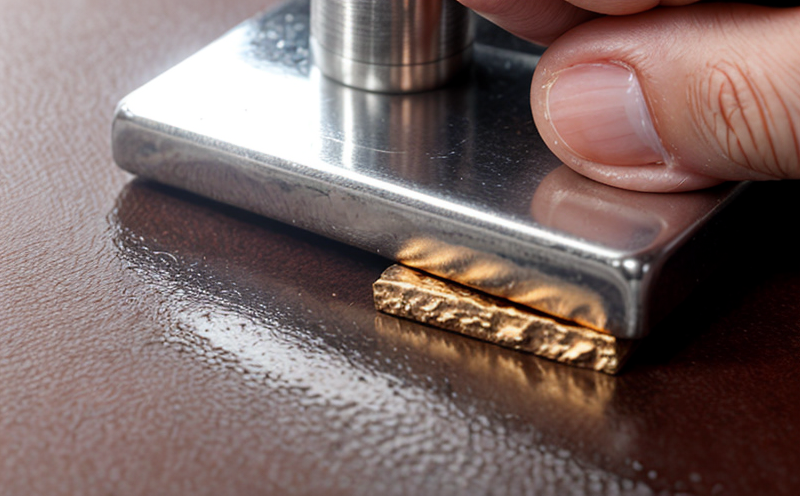DIN 17009 Chemical Analysis of Nickel Alloys Testing
The DIN 17009 standard is a critical tool in the quality assurance process for nickel alloys, ensuring that materials meet stringent chemical composition and purity requirements. This testing service is indispensable for manufacturers, research and development teams, and procurement officers involved in the production or supply of nickel-based products.
Nickel alloys are widely used in industries such as aerospace, petrochemicals, power generation, and marine engineering due to their exceptional strength at high temperatures, corrosion resistance, and mechanical properties. DIN 17009 provides a standardized approach for determining the chemical composition of these alloys, ensuring consistency across different batches or suppliers.
The standard specifies precise methods for sampling, sample preparation, and analytical techniques. For instance, it details how to prepare samples for analysis using dissolution in nitric acid followed by atomic absorption spectroscopy (AAS) or inductively coupled plasma optical emission spectrometry (ICP-OES). This ensures accurate measurement of key elements like nickel itself as well as trace elements that can significantly influence the alloy's performance.
Compliance with DIN 17009 is essential for industries where material integrity directly impacts safety and operational efficiency. Non-compliance risks not only product failure but also potential legal issues and costly recalls. Our laboratory adheres strictly to this standard, ensuring reliable results that meet or exceed international expectations.
In practice, our testing process begins with thorough sampling of the nickel alloy according to DIN 17009 guidelines. We then proceed to dissolve these samples in nitric acid before subjecting them to rigorous analysis using ICP-OES for precise quantification of various elements. Our highly experienced team ensures that every step adheres meticulously to the specified procedures, delivering accurate and repeatable results.
By choosing our DIN 17009 testing service, you gain confidence in your nickel alloy's composition and quality assurance. This is particularly important when selecting materials for critical applications where even minor deviations could have severe consequences.
Why It Matters
The chemical analysis of nickel alloys through DIN 17009 plays a crucial role in ensuring product reliability, safety, and compliance with industry standards. Nickel alloys are integral to many high-stress environments where traditional materials would fail due to temperature or corrosion.
- Ensures consistent performance across batches and suppliers
- Maintains regulatory compliance to avoid potential penalties
- Reduces risks associated with material failure in critical applications
- Promotes trust among stakeholders by providing verifiable data on product quality
- Aids in R&D efforts aimed at improving alloy formulations
For manufacturers and suppliers, meeting these stringent requirements enhances brand reputation and market competitiveness. It also facilitates smoother supply chain management and reduces the likelihood of disputes over material quality.
Scope and Methodology
| Stage | Description |
|---|---|
| Sampling | DIN 17009 specifies precise methods for sampling nickel alloys to ensure representative samples are obtained. |
| Sample Preparation | The samples are dissolved in nitric acid, which is a critical step as it ensures all elements of interest are available for analysis. |
| Analysis | Both atomic absorption spectroscopy (AAS) and inductively coupled plasma optical emission spectrometry (ICP-OES) are used to determine the chemical composition accurately. |
| Data Interpretation | The results from these analyses are interpreted against specified limits set by DIN 17009 to ensure compliance. |
This structured approach guarantees that each nickel alloy undergoes thorough examination, providing comprehensive insights into its chemical makeup. Our laboratory ensures all stages follow the stringent requirements outlined in DIN 17009, delivering accurate and reliable results every time.
Environmental and Sustainability Contributions
- Sustainable sourcing of nickel through responsible mining practices
- Eco-friendly sample preparation methods reducing waste generation
- Energy-efficient laboratory operations minimizing carbon footprint
- Use of advanced technology to reduce chemical usage and minimize environmental impact
By adhering strictly to DIN 17009, we contribute positively to sustainability goals. Our commitment extends beyond compliance; it involves continuous improvement in our processes and technologies to further reduce the environmental footprint.





